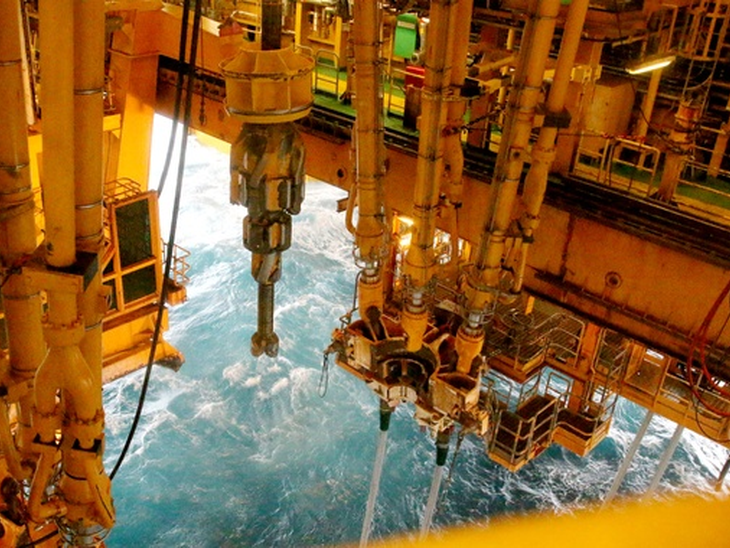

The ANP published yesterday (05/11) the edition nº 121 of the Monthly Bulletin of Oil and Natural Gas Production, which marks the 10 years of uninterrupted publication of this report, which started in November 2010 with data referring to the month of September of that year. This commemorative edition presents several highlights on the evolution of oil and natural gas production in the last 10 years.
During this period, there were profound changes in the oil production environment in the country, with emphasis on the Pre-salt, which helped Brazil to jump from 13th to 10th position in the ranking of the largest oil producing countries. In 10 years, the production of the pre-salt has been increased by almost 60 times, surpassing the mark of 2 million barrels / day and already corresponds to 70% of the national production.
The information is from the ANP's Monthly Bulletin on Oil and Natural Gas Production, which also provides detailed data on national production for September 2020.
National production
In September, national production was 3,695 MMboe / d (million barrels of oil equivalent per day), of which 2,907 MMbbl / d (million barrels per day) of oil and 125 MMm3 / d (million m3 per day) of natural gas. Oil production decreased 5.8% compared to the previous month and 0.7% compared to September 2019. In natural gas, there was a reduction of 6.2% in relation to August and 2.8% in comparison with the same month of the previous year. The main reasons for the fall were the partial stop of platform P-69 in the Tupi field and the total stop of the FPSO Cidade de São Paulo in the Sapinhoá field.
This month, 32 fields remained with their respective production temporarily interrupted due to the effects of the Covid-19 pandemic, 16 of which were seafarers and 16 onshore, and a total of 60 maritime installations remained with production interrupted. In August, there were 33 fields and 60 maritime installations.
Pre-salt
Pre-salt production in September was 2,586 MMboe / d, with 2,054 MMbbl / d of oil and 84,605 MMm3 / d of natural gas. In total, there was a reduction of 6.8% in relation to the previous month and an increase of 13% in relation to September 2019. The production in the Pre-salt originated in 117 wells and corresponded to 70% of the national production.
Use of natural gas
In September, the use of natural gas was 97.5%. 52.9 MMm³ / day were made available to the market. The gas flaring in the month was 3.4 MMm³ / d, a reduction of 13% compared to the previous month and an increase of 6.1% compared to the same month in 2019.
Origin of production
In September, offshore fields produced 96.8% of oil and 85.7% of natural gas. The fields operated by Petrobras were responsible for 94.1% of the oil and natural gas produced in Brazil. However, fields with Petrobras' exclusive participation produced 43% of the total.
Highlights
In September, the Tupi field, in the Santos Basin pre-salt, was the largest producer of oil and natural gas, registering 953 MMbbl / d of oil and 42.7 MMm3 / d of natural gas.
The Petrobras 75 platform, producing in the Búzios field through four interconnected wells, produced 162.457 Mbbl / d of oil and was the facility with the highest oil production.
The FPSO Cidade de Itaguaí installation, producing in the Tupi field, through seven wells connected to it, produced 7.342 MMm³ / d and was the installation with the highest production of natural gas.
Estreito, in the Potiguar Basin, had the largest number of onshore producing wells: 1,044.
Tupi, in the Santos Basin, was the maritime field with the largest number of producing wells: 58.
Marginal accumulation fields
These fields produced 477.9 boe / d, of which 81.5 bbl / d of oil and 63 Mm³ / d of natural gas. The Iraí field, operated by Petroborn, was the largest producer, with 392.5 boe / d.
Other information
In September 2020, 265 areas granted, three areas for consideration and five areas for sharing, operated by 36 companies, were responsible for national production. Of these, 61 are maritime and 212 are onshore, with 12 relating to contracts for areas containing marginal accumulations. Production took place in 6,670 wells, 490 offshore and 6,180 onshore.
The average API grade of oil extracted in Brazil was 28, with 2.7% of production considered light oil (> = 31 ° API), 89.9% average oil (> = 22 API and <31 API) and 7, 4% heavy oil (<22 API).
The mature onshore basins (fields / long-term tests in the Espírito Santo, Potiguar, Recôncavo, Sergipe and Alagoas basins) produced 98.5 Mboe / d, of which 78.5 thousand bbl / d of oil and 3.2 MMm³ / d of natural gas. Of this total, 81.6 thousand boe / d were produced by Petrobras and 16.9 thousand boe / d were produced by concessions not operated by Petrobras, of which: 11,329 boe / d in Rio Grande do Norte, 5,120 boe / d in Bahia , 278 boe / d in Alagoas, 127 boe / d in Sergipe and 90 boe / d in Espírito Santo.

Contact us